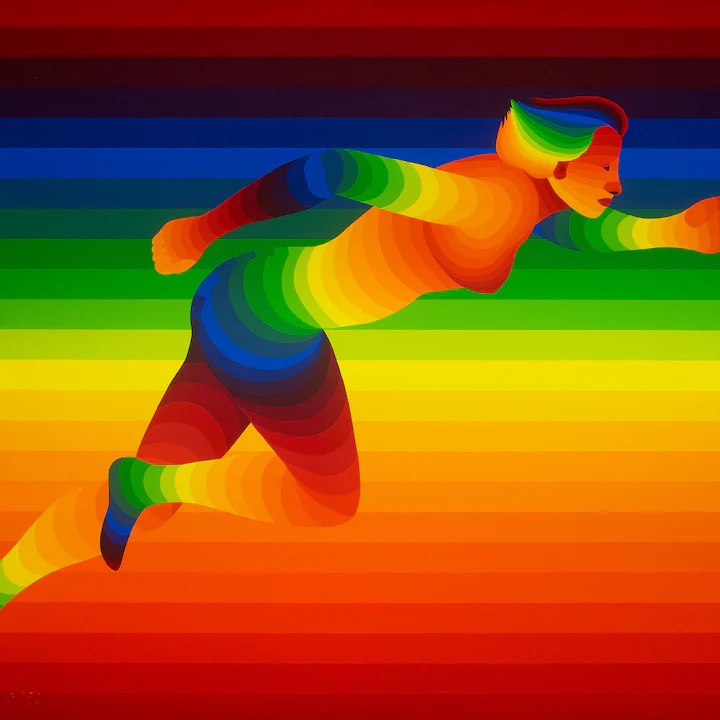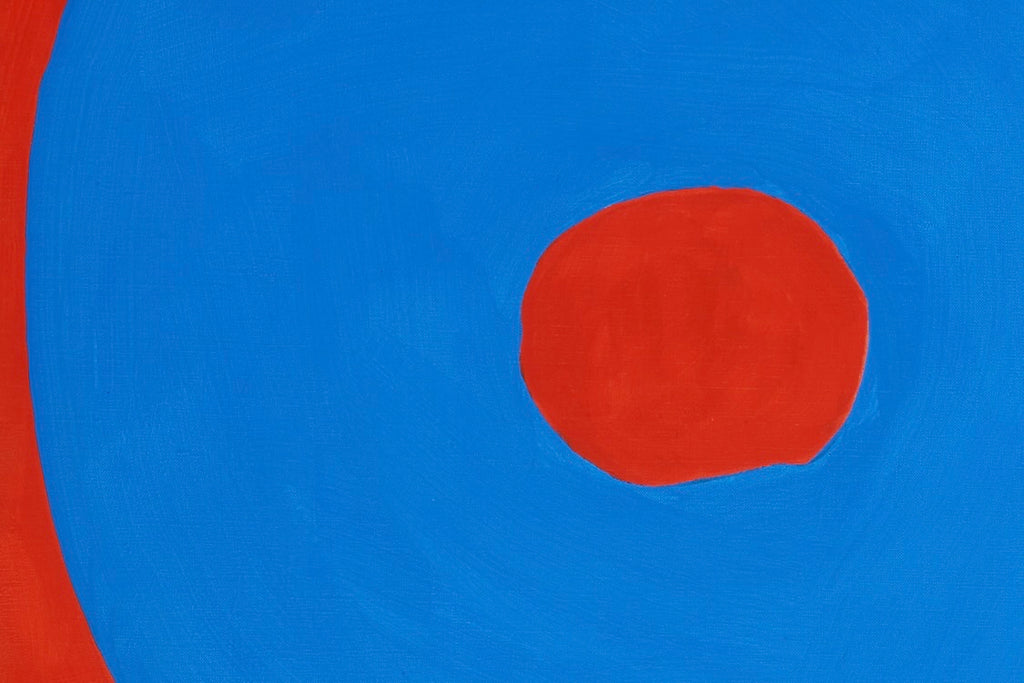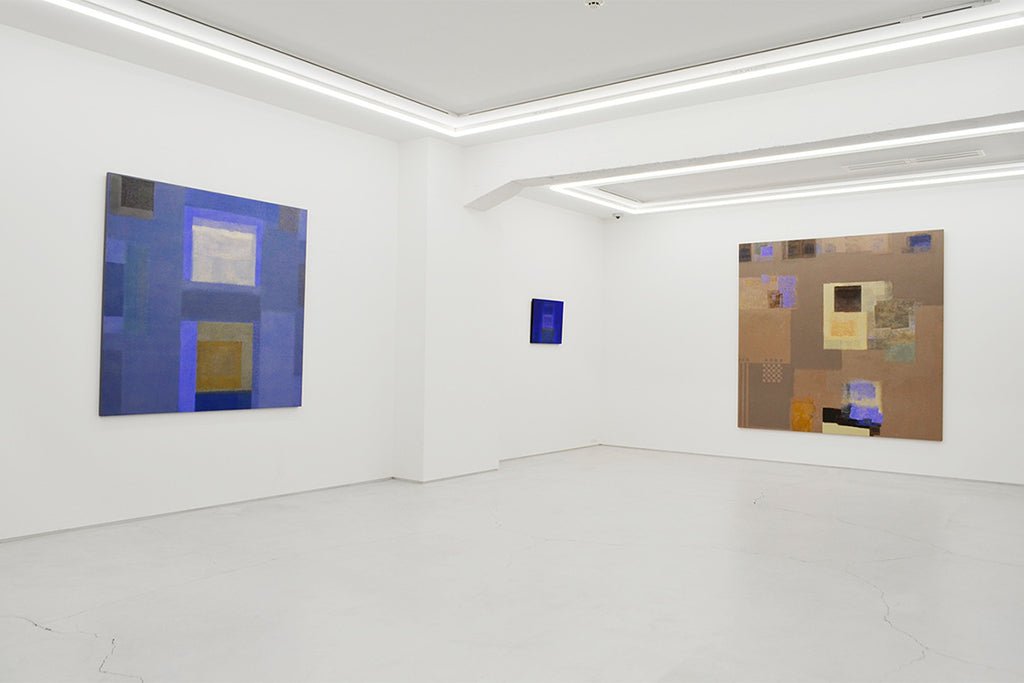ARTICLES
Ay-O Why Rainbows?
A New Appreciation Contemporary Japanese and Asian Art
13/23

Installation image, Karuizawa, 2019
In our ongoing series, we present the digital archive of the book 'A New Appreciation Contemporary Japanese and Asian Art' This book delves into internationally acclaimed artists and the dynamics of the Asian art market. The thirteenth installment introduces Ay-O.
Ay-O Why Rainbows?
Kunio Motoe
Professor Emeritus, Tama Art University; Art Critic
A Sixth Sense
An ‘evaluation’ is an arbitrary explanation or interpretation of a certain person or thing. It involves countless errors, omissions, and even intentional misrepresentation. Referring to Ay-O as ‘The Rainbow Man’ is not necessarily mistaken but it is important to understand that this gifted avant-garde artist who emerged from the chaos of post-war Japan as an avant-garde artist is not sufficiently defined by rainbows. It is important to consider when, why, and how Ay-O’s rainbow motif came into being. To understand that, and to appreciate this artist properly, it is necessary to explore Ayo’s starting point. Despite being well-known, Ay-O has not been given the legitimate evaluation and appraisal he deserves.
Ay-O (his real name is Takao Iijima) was born in Ibaraki prefecture in 1931. Given that he exhibited in the Yomiuri Independent Exhibition, the most avant-garde venue of the time, and that he joined the Democratic Artists Association organized as a free and egalitarian movement by modernist Ei-Q, it was natural that Ay-O would abandon the stability of a career teaching junior high school and head for New York, the newly emerged center of the avant-garde at the time, in 1958.
Ay-O’s initial works were influenced by Abstract Expressionism, a movement at its height in New York at the time, and gained some degree of recognition. Ay-O, however, was not satisfied and was more intent on expressing himself by whatever technique. He felt that the prevailing trends in painting were like jumping in a river and splashing around . ‘splashes on canvas simply for emotional expression do not produce any sort of objective proof.’ Ay-O was after something extraordinary in order to shake off conventions of the past. It became his mission to identify his own ‘sixth sense,’ beyond sight, sound, touch, taste, and smell. He later said that ‘ready-made’ objects inspired him. His pursuit was cutting-edge. This is clear from his involvement with the Fluxus movement and Lithuanian American artist George Maciunas.

Ay-O in front of one of his works
Questioning Human and Social Fundamental
Ay-O’s developing inclination towards materiality overlapped with John Cage’s 4’33. The idea of a pianist sitting at the piano without touching a key impressed Ay-O profoundly. He said he felt he was born at that moment. It is difficult to assess the intersection of Ay-O’s ‘concrete materiality’ and the metaphorical presentation of emptiness as ‘a pianist who doesn’t play’ (or, following author Atsushi Nakajima, an archer who forgets his bow). Materiality, emptiness, nothingness . how can these relate to each other if they refuse a Zen dialogue? The correct answer is elusive, but it is certain that Ay-O viewed the ‘rainbow’ impartially rather than as something awesome. This is at the root of his intuitive understanding of the question.
Materiality, emptiness, nothingness. When two things appear at first glance to differ, there are two possible disparate notions. The first is to deny connection. The second, and the position of Ay-O, is to find the relation at some deep level. Ay-O’s highly regarded Rainbow No. 3 Venice Tactile Room illustrated this briefly at the 1966 Venice Biennale. There is a conflict in the coexistence of the visual sense of a ‘rainbow’ that fills and dominates a space and the tactile sense of sixty-five finger boxes with unknown contents attached to a wall. M.R. Sullivan’s observation, in his Sculptural Materiality in the Age of Conceptualism (Routledge, 2016), that the amount of press coverage Ay-O’s Tactile Room generated reflects just how controversial this work was. According to the New York Times ( July 4, 1966) the mechanism inside the boxes, in particular, were problematic and security had to be placed around the installation.
Ay-O he felt nature, and the origin and infinity of the universe, in the rainbow that did not exist in artificial lines. This surprisingly resembles the concept of Yves Klein’s monochromatic painting. Ay-O remarked, ‘Lines travel through infinity but color is infinite. I experience the full alignment of the universe through color and feel truly free’ (1958). His fundamental position applies also to objects. Ay-O noted that attaching personal objects, created by himself, to canvas, was about the starkness of death rather than about freedom. Even if not successful, Ay-O’s placing of objects was a way for him to stimulate ideas. It was a stunning flight of artistic perception. The suspended objects existed in their ability to halt judgment. The depth of Ay-O’s concept, his questioning of the nature of human life and human society, should be given more attention.
Kunio Motoe

Born in Matsuyama City in 1948. Attended kindergarten in Tokyo, and elementary and middle school in Hokkaido (Sapporo and Otaru). After graduating the University of Tokyo Department of Art History in 1976, he joined the National Museum of Modern Art, Tokyo where he curated large-scale retrospective exhibitions of Matisse (1981), Picasso (1983), Gauguin (1987), and Redon (1989), as well as the international group exhibition Metaphor and Symbols (1984), and contemporary art exhibitions featuring Tesuka Osamu (1990), Kuroda Aki (1993), Kimura Chuta ((1994), Tatsuno Toeko (1995). He became Professor at Tama Art University in 1989, and Professor Emeritus there until 2019. He served as Director of the Fuchu City Museum of Art from 2001 . 2009. He died in June 2019. Major publications include What is Beauty: Discovering 20th Century Art (Heibonsha, Inc.), The Way of Painting (Skydoor, Inc., Odilon Redon: Seeds of Light (Misuzu Shobo, Inc.), Contemporary Japanese Painting (Misuzu Shobo, Inc.).
Book Information
Title: A New Appreciation Contemporary Japanese and Asian Art (English Edition)
Publisher : Whitestone Co., Ltd.
Release Date : February 26, 2020
*Information in this article is at the time of publication.
ARTIST

Ay-O, along with Masuo Ikeda and others, actively participated in the Demokrato Artists Association during the 1950s, gaining attention for his vibrant and colourful paintings. In 1958, he relocated to New York and began incorporating physical objects into his art to initiate interactions with the outside world, thereby allowing for sensory experiences. This approach led to his ‘finger boxes’, inviting individuals to insert their fingers into a hole on the side of the box to feel the hidden materials. Ay-O also developed installation pieces that seamlessly merge with their surroundings. His artworks engage all five senses, transcending the boundaries of traditional painting. Ay-O’s choices of various locations and environments make him a precursor to contemporary Happenings and installations.
As a member of the Fluxus movement, which transcended the narrow divisions of genre by including musicians, poets and artists in performances and printed works, Ay-O collaborated with notable figures such as Nam June Paik and Yoko Ono. Departing from the conventional practice of using only lines in his artwork, he began incorporating various colours, from red to purple. This innovation led to the creation of his renowned ‘rainbow’ works, which propelled him to international recognition and earned him worldwide fame as well as the nickname ‘rainbow artist’, following his exhibition at the 1966 Venice Biennale.



